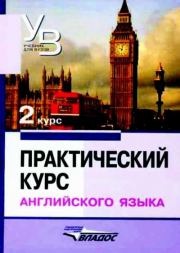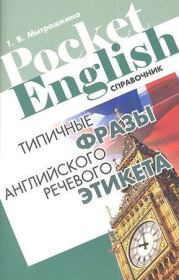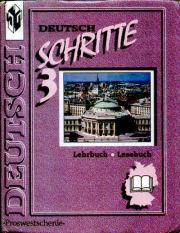В Д Аракин - Практический курс английского языка. 2 курс
 | Название: | Практический курс английского языка. 2 курс |
Автор: | В Д Аракин | |
Жанр: | Иностранные языки, Учебники и пособия ВУЗов | |
Изадано в серии: | неизвестно | |
Издательство: | неизвестно | |
Год издания: | - | |
ISBN: | неизвестно | |
Отзывы: | Комментировать | |
Рейтинг: | ||
Поделись книгой с друзьями! Помощь сайту: донат на оплату сервера | ||
Краткое содержание книги "Практический курс английского языка. 2 курс"
Учебник является второй частью серии комплексных учебников для I-V курсов педагогических: вузов. Основная цель - развитие навыков устной и письменной речи. Настоящее издание учебника несколько переработано в соответствии с изменениями реалий британской жизни. Выпуск посвящается 100-летнему юбилею Владимира Дмитриевича Аракина — одного из замечательных лингвистов России.
Читаем онлайн "Практический курс английского языка. 2 курс". [Страница - 175]
68. Replace shall and will with the suggested alternative verb, making any necessary changes:
69. Fill in the blanks with should or would:
70. Translate the sentences into English, using should or would:
REVISION EXERCISES ON MOOD AND MODAL VERBS
71. Replace the infinitives in brackets by the appropriate oblique mood:
72. Answer the following questions:
73. Replace the infinitives in brackets by the correct form of the oblique moods:
74. Translate these sentences into English:
75. Translate the following sentences Sato English. Pay attention to the use of the oblique moods;
76. Complete the following sentences:
77. Replace the infinitives in brackets by the correct form of the oblique mood:
78. Translate these sentences into English. Pay attention to the use of the oblique moods:
79. Comment on the meaning of the modal verbs and translate the sentences into Russian;
80. Use the verbs can oi may.
81. Fill in the blanks with should, need, hare to with the appropriate form of the Infinitive:
82. Translate the sentences into English, using modal verbs:
83. Insert tee appropriate modal verb:
84. Translate the sentences into English using modal verbs:
NON-FINITE FORMS OF THE VERB
The Infinitive
85. Comment on the forms of the infinitives:
86. Supply the missing forms of the following infinitives:
87. Use the appropriate foia» of the infinitives in brackets:
88. Translate these sentences Into English, paying attention to the form of the infinitive:
89. Put to where necessary before the infinitives:
90. Translate the following sentences into Russian, paying attention to the use of the particle to, which implies the verb already mentioned:
91. Respond to the following questions or statements, using the phrases from the list in brackets:
92. Complete the following, using the infinitive
a) as subject:
b) as predicative:
c) as object:
d) as attribute;
e) as adverbial modifier of purpose:
f) as adverbial modifier of result:
93. Replace the subordinate clauses by attributive infinitives:
94. Make up sentences, using the following phrases with attributive infinitives:
95. Translate these sentences into English, using attributive infinitives:
96. Point out Infinitives of result and translate the sentences into Russian:
97. Paraphrase the following sentences so as to use infinitives of result:
98. Translate the sentences into English, using infinitives of result:
99. State the functions of infinitives in the following sentences:
100. Translate the sentences into English, using infinitives:
101. Paraphrase the following sentences, making the object of the infinitive the subject of the sentence:
102. Make up sentences, using the following adjectives with infinitives (follow the examples of the previous exercise):
103. Point out the Complex Object and the Complex Subject with the Infinitive. Translate the sentences into Russian:
104. Translate the sentences into English, using the Complex Object or the Complex Subject:
105. Replace the clauses in the following sentences with infinitive phrases:
106. Comment on the infinitive phrases and translate the sentences into Russian:
107. Paraphrase, using "for-phrases" with infinitives:
108. Complete the following, using a suitable infinitive phrase:
109. Make up sentences, using the following infinitive phrases parenthetically:
110. Translate the sentences into English, using infinitives:
The Gerund
111. Point out the Gerund and comment on its noun and verb characteristics. Translate the sentences into Russian:
112. Use the appropriate form of the Gerund of the verbs in brackets:
113. Use the appropriate form of the Gerund and insert prepositions where necessary:
114. Comment on the functions of the Gerund in the following serlences:
115. Use the appropriate form of the Gerund. Insert prepositions where necessary:
116. Translate these sentences into English, using the Gerund:
117. Point out complexes with the Gerund and comment on their function? in the following sentences;
118. Make up sentences, using the Gerund after the following verbs:
119. Point out gerunds and verbal nouns. Translate the sentences into Russian:
120. Translate into English, using the Gerund:
121. Use the Gerund instead of the subordinate clauses. Insert prepositions if necessary:
122. Complete the following, using the Gerund:
123. Translate the sentences Into English, using the Gerund;
The Participles
124. Point out the First Participle and state its functions in the sentence:
125. Use the appropriate form of the First Participle of the verbs brackets:
126. Translate the sentences into English, using the First Participle:
127. Point out the Complex Object with the First Participle. Translate the sentences into Russian:
128. Use the Infinitive or the First Participle of the verbs in brackets to form a Complex Object:
129. Point out the "Nominative Absolute" construction and translate the sentences into Russian:
130. Translate the sentences Into English, using the First Participle:
131. Replace the attributive and adverbial clauses in the following sentences by participle phrases:
132. Replace the participle phrases in the following sentences by attributive or adverbial clauses:
133. Translate the sentences into English, using attributive participle phrases, where possible:
134. Point out the Second Participle and state its functions in the sentence:
133. Replace the attributive clauses in the following sentences by phrases with the Second Participle, where possible:
136. a) Translate the following word-groups into English. Pay attention to the place of the Second Participle:
b) Make up sentences with the word-groups you have translated.
137. Point out the Complex Objects with the Second Participle. Translate the sentences into Russian;
REVISION EXERCISES ON THE VERBAIS
138. State the function of the Infinitive in the following sentences and translate them into Russian:
139. Complete the following sentences, using infinitives or infinitive constructions:
140. Use the Gerund or the Infinitive of the verbs in brackets. Fill in the blanks with appropriate prepositions:
141. Translate the sentences into English, using the
--">Книги схожие с «Практический курс английского языка. 2 курс» по жанру, серии, автору или названию:
 |
| Татьяна Викторовна Митрошкина - Типичные фразы английского речевого этикета. Справочник Жанр: Иностранные языки Год издания: 2013 Серия: Pocket English |




